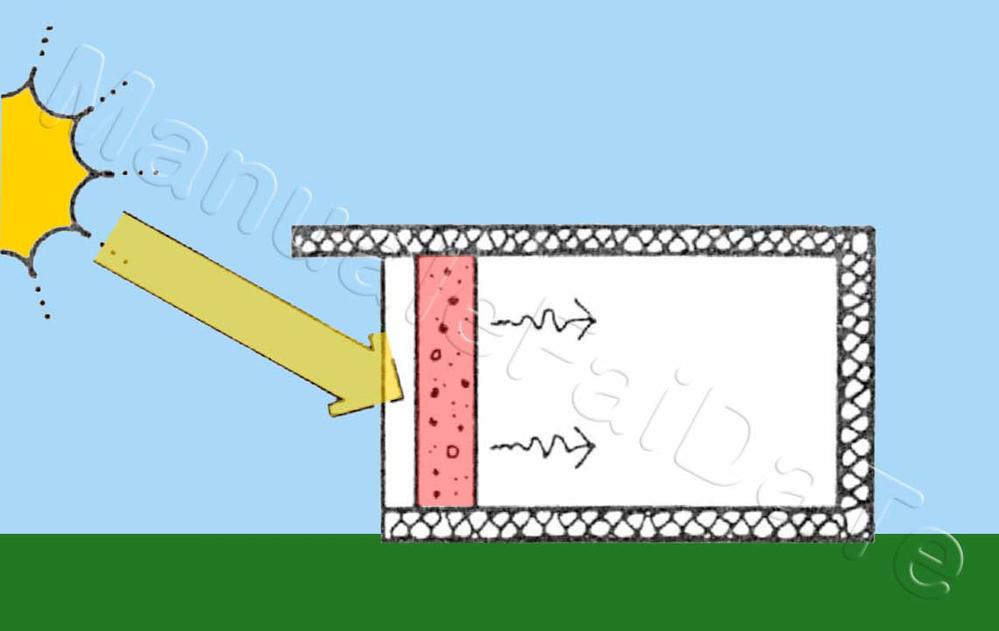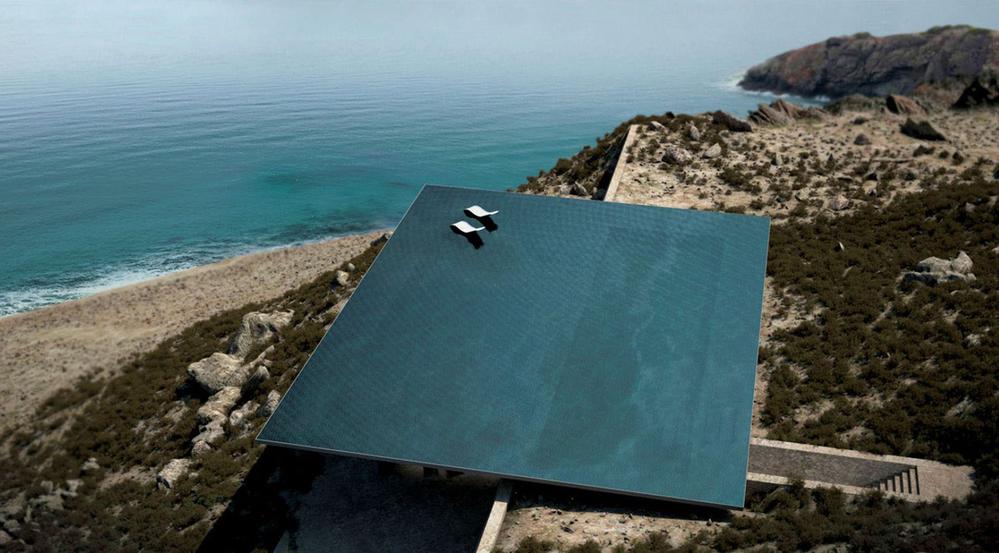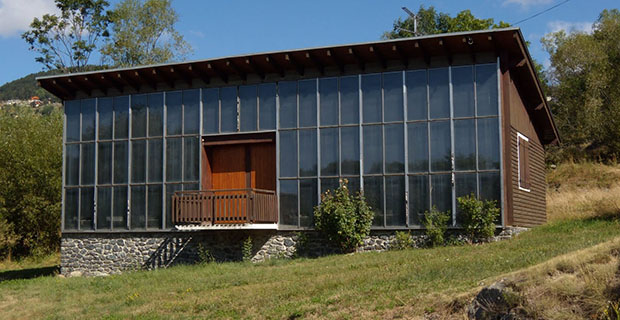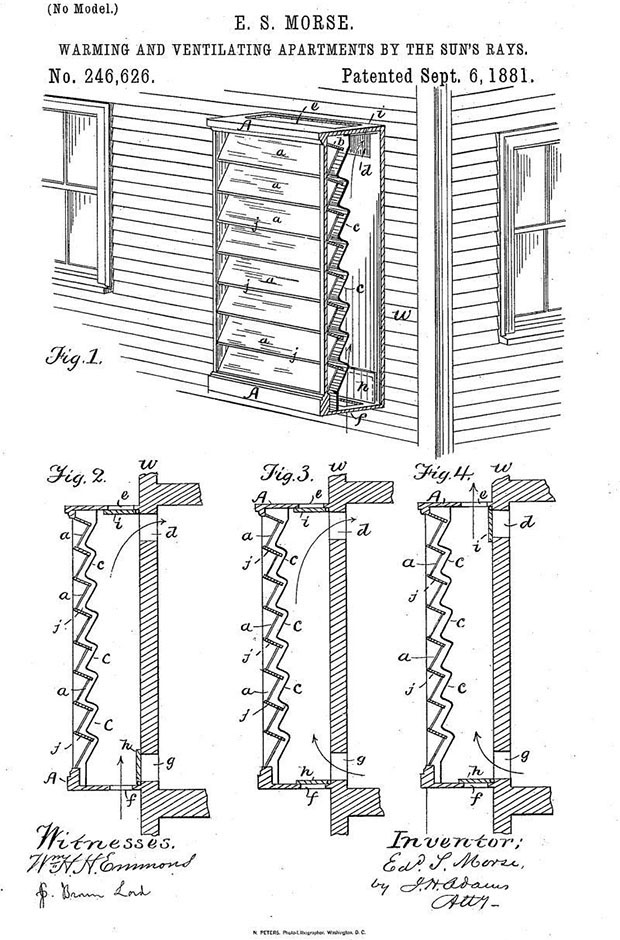With indirect gain we define the passive process where solar radiation hits a thermal mass between the sun and the living space. Energy is absorbed by the mass, converted into heat and released into the space below.
In practice there are two absorption systems: the solar walls in which the thermal mass is contained and the so-called roof pond placed on the roof of the space to be heated.

For solar walls it is necessary to have a window facing South and a thermal mass placed at 10 or more centimeters from the glass that serves to accumulate and distribute the heat inside the building.
There are different materials to build a solar wall and mostly water and masonry materials.

The roof pond (painted in black or blue) works by absorbing the sun's rays from an external wall and releasing the heat to the inner wall. On this wall it is possible to apply openings through which the sun's rays are allowed to pass freely, but only during the day. Solar radiation passes through the glass and temperatures around 65 degrees can be reached.
In this way the heat passes to the internal wall which at the same time releases the cold air of the room: so during the bad days the sun can provide the accumulated heat.

- Ventilated façade, the best known system is that of the Trombe house built in 1967 in Odeillo, France; however, there are many variations among which the most famous Barra-Costantini system through which the distribution of heat takes place through the water whose mass is placed on the roof can be used in summer and winter.

When is it cold?
During winter, the thermal mass of water is placed in the sun during the day and covered at night. The heat that has been accumulated during the day is irradiated from the ceiling to the space below.
During summer the position of the solar panels is reversed: during the day they are closed and opened during the night to allow the water to cool and make it ready to absorb the heat of the new day.